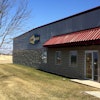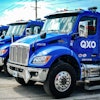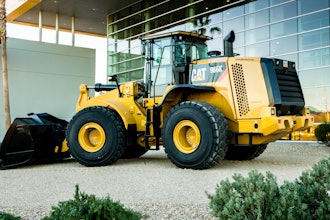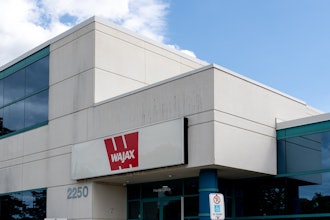Industrial manufacturing pillars Stanley Black & Decker and Honeywell both reported their 2017 first quarter results on Friday. Here's how each fared:
Stanley Black & Decker
Following solid sales growth of 3 percent and organic growth of 4 percent in Q4, Stanley Black & Decker fared even better in Q1. The company posted Q1 total sales of $2.8 billion, up 5 percent year-over-year, while organic sales grew by that same amount. The company said total sales growth was driven primarily by increased volume (+5 percent) and acquisitions (+3 percent), more than offsetting currency (-1 percent) and divestitures (-2 percent).
Stanley's operating margin rate grew 50 base points in Q1 to 13.6 percent, while operating margin excluding acquisitions grew 110 base points to a record 14.2 percent.
By business segment in Q1:
- Tools & Storage sales of $1.86 billion were up 8.6 percent year-over-year, while profit of $287.3 million increased 9.7 percent. Each geographic region contributed to the 6 percent organic growth, with North America +8 percent, Europe +6 percent, and emerging markets +1 percent.
- Security sales of $478.5 million were down 5.1 percent year-over-year, while profit of $50.9 million decreased 15.4 percent. The company said the sales decrease was primarily driven by the sale of its Mechanical Security business (-6 percent).
- Industrial sales of $472.6 million increased 2.5 percent year-over-year, while profit of $86.3 million increased 13.6 percent. The company said the sales increase was driven by a five percentage point increase in volumes. Engineered Fastening organic revenues increased 4 percent, while Infrastructure organic revenues were up 2 percent as higher hydraulic tools volumes driven by successful commercial actions and improved market conditions, more than offset flat oil & gas volumes.
Along with selling Mechanical Security, Stanley's Q1 included the completed acquisitions of Newell Brands' Tools business and the Craftsman brand from Sears — for a combined $2.85 billion.
"We continue to take strategic capital deployment actions for future growth while expanding our operating margin rate," Stanley B&D CEO James Loree said in the company's earnings statement Friday. "During the quarter, we closed three important transactions which included adding iconic brands Lenox, Irwin and Craftsman to our strong portfolio of world-class brands and franchises. The sale of the majority of our Mechanical Security businesses allowed us to redeploy that capital into more fruitful growth opportunities. The company is now working intensely to invest in product, brand and commercialization for the Craftsman brand, and to successfully integrate Newell tools, as we remain focused on our diversified industrial portfolio strategy."
During the company's Q4 earnings call in January, Loree stated that Stanley Black & Decker plans to double in size by 2022.
Honeywell
After posting flat total sales and a 1 percent decline in organic sales in Q4 2016, Honeywell improved slightly in Q1 2017. The company posted total sales of $9.52 billion, essentially flat year-over-year with a 0.3 percent gain. The company said organic sales increased approximately 2 percent.
By business segment in Q1:
- Aerospace sales of $3.55 billion decreased 4.3 percent year-over-year, while profit of $796 million was flat. Organic sales were flat.
- Home and Building Technologies sales of $2.55 billion increased 3.0 percent, while profit of $389 million increased 8.1 percent. Organic sales icnreased approximately 3 percent.
- Performance Materials and Technologies sales of $2.07 billion decreased 9.3 percent, while profit of $471 increased 2.2 percent. Organic sales increased approximately 5 percent.
- Safety and Productivity Solutions sales of $1.32 billion increased 25.0 percent, while profit of $194 million increased 29.3 percent. Organic sales increased approximately 3 percent. The major total sales increase was primarily driven by the company's 2016 acquisition of warehouse automation provider Intelligrated for $1.5 billion.
"Each of our businesses contributed,” Honeywell president and CEO Darius Adamczyk said. "The commercial aftermarket within Aerospace and the global distribution business within Home and Building Technologies remained strong. In Performance Materials and Technologies, robust demand for Solstice low-global-warming products drove double-digit organic growth in Advanced Materials, and improving conditions in the oil and gas industry bolstered ongoing strength in UOP. In Safety and Productivity Solutions, demand for warehouse solutions and industrial safety products enabled growth in the quarter."






















